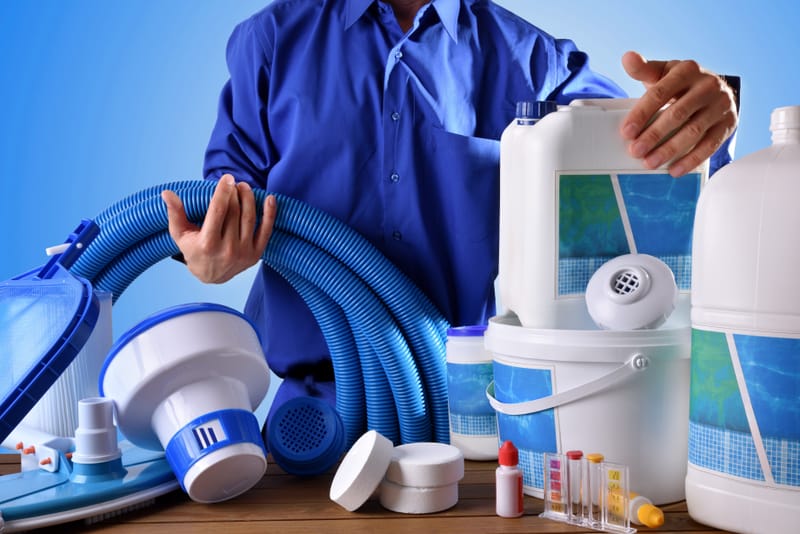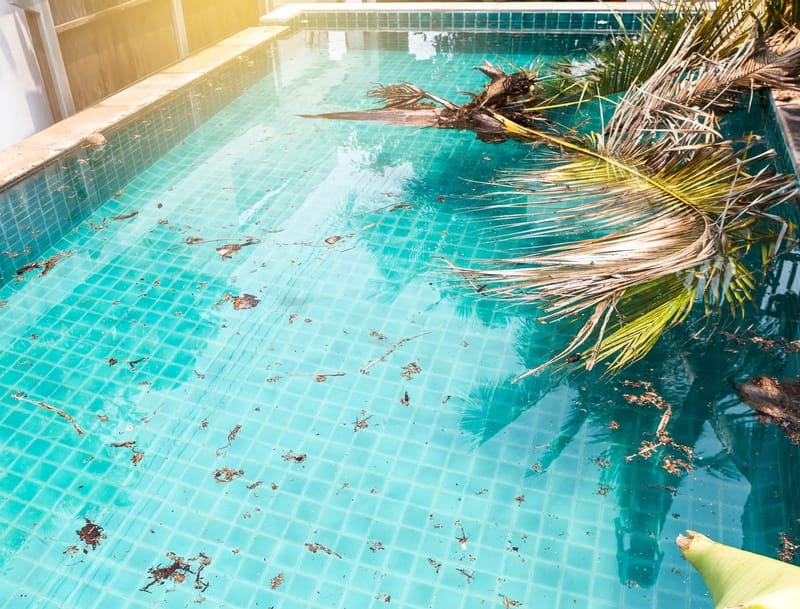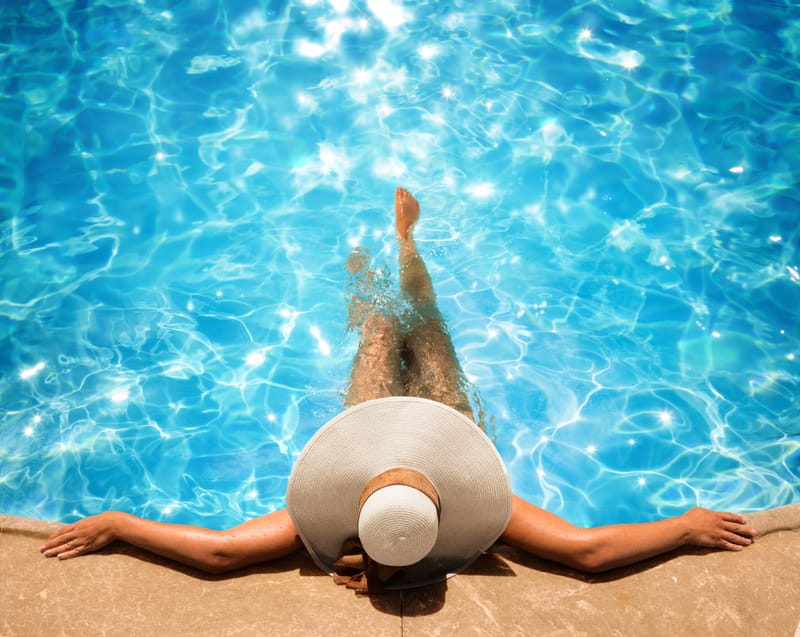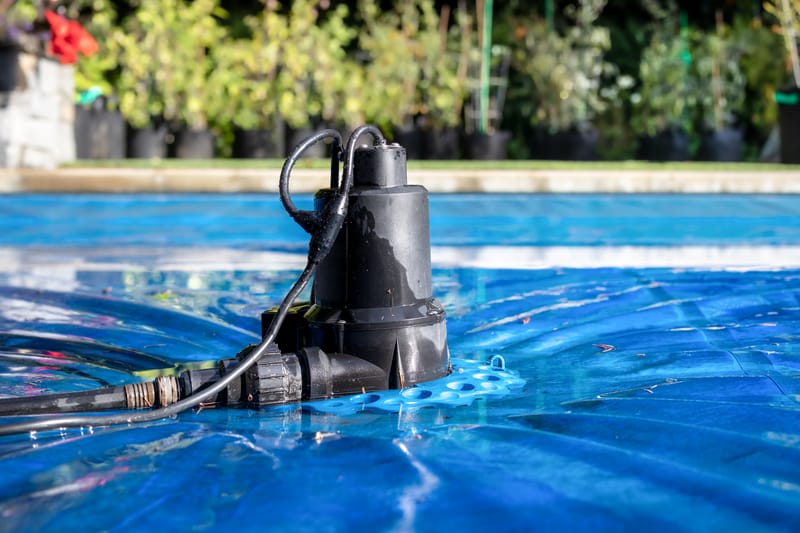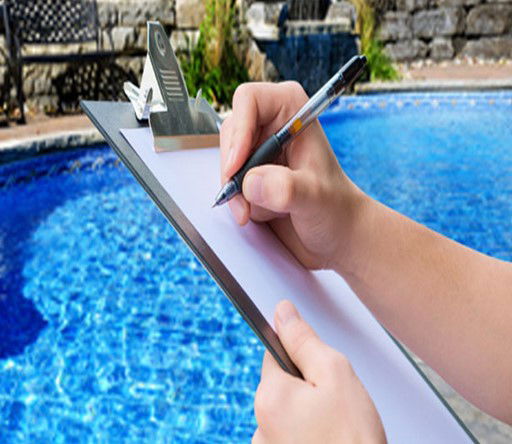Create Your Oasis With Aqua Pro +
Turning your pool dreams into reality
Specialized Pool and Spa Services
Quality care, affordable prices
SCHEDULE TODAY
PACKAGES
REPAIRS & MAINT.
Setting the GOLD standard for Pool Care and Repair
ALL SERVICES
Setting the GOLD standard for Pool Care and Repair
Shop for Your Pool
Main Categories
F.A.Q
HOW FREQUENTLY SHOULD MY POOL'S WATER CHEMISTRY BE TESTED?
- A minimum of once per week, especially in temperatures 70o degrees or higher. If your pool is frequently used by small children or pets it is recommended to test 2-3 times per week, or even daily.
- Additional “high-contaminant events”, such as stormy weather, may warrant more testing as well as rainstorms will introduce a lot of new fresh water, dust, pollen, debris and even air pollution into your pool diluting chlorine levels and altering water balance.
- Chlorine: 1.0–4.0 ppm
- pH: 7.4-7.6
- Total Alkalinity: 80–120 ppm
- Calcium Hardness: 200–400 ppm
- Cyanuric Acid: 30–50 ppm
HOW FREQUENTLY SHOULD MY POOL FILTER BE CLEANED?
The frequency of cleaning pool filters is dependent on the type of filter.
- Sand Filter
- Backwash: every 4 weeks, or sooner if you see your pressure gauge reaching 5-10 psi above normal.
- When backwashing, make sure to use the “rinse and recirculate” feature on your filter after you backwash. This setting is used when you need to return the water back into the pool without making it go through the filter. The rinse expels the debris and compacts the sand again to prepare the filter to catch more dirt.
- Deep Clean: you should have all of the sand inside your filter replaced every 5-7 years.
- Backwash: every 4 weeks, or sooner if you see your pressure gauge reaching 5-10 psi above normal.
- Cartridge Filter
- Cannot backwash a cartridge filter.
- Deep Clean: If you are experiencing an 8-10 PSI increase in pressure, somewhere up around 25-30 PSI or higher, this means that it is time for you to clean your filter, which will typically be twice a year.
- DE pool filter
- Backwash: Once in 4-6 weeks. While periodic backwashing takes care of most of the debris inside a D.E. filter, only ‘breaking down’ the filter and manually cleaning it will get rid of all the debris.
- Deep Clean: Filter manufacturers recommend that a filter be manually cleaned twice a year (spring and fall are best). To prevent mishap the filter should be cleaned by a professional, however, anyone who is mechanically inclined should be able to open the filter, clean the grids, inspect the grid assembly, and reassemble the filter. Call us for specific instructions or if you find you need parts during the inspection.
WHAT IS FLOW RATE?
Flow Rate
In order to ensure proper circulation and optimize your pump speed for the size of your pool, you have to determine the proper flow rate for your pool.
You find the right flow rate for your pool by:
**For 2-inch piping, the maximum flow rate will be about 73 GPM
**For 1.5-inch piping, the maximum flow rate will be about 42 GPM
Talk to your pool service professional to determine what a healthy flow rate is for your pool.
In order to ensure proper circulation and optimize your pump speed for the size of your pool, you have to determine the proper flow rate for your pool.
While most pool owners understand the need to clean and disinfect their pool, not as many truly understand the importance of circulation, flow rate, and turnover.
Proper pool circulation is one of the keys to maintaining a healthy pool environment. Circulation helps your pool sanitation system, filter and chemical additives all function properly. Without the right circulation, your pool can encounter a number of problems.
You find the right flow rate for your pool by:
- Calculating its capacity in gallons.
- Then, divide that number by your desired turnover rate, ideally six to eight hours.
- Divide that answer by 60 to find the minimum gallons per minute, or GPM, flow rate required to achieve the desired turnover rate.
**For 2-inch piping, the maximum flow rate will be about 73 GPM
**For 1.5-inch piping, the maximum flow rate will be about 42 GPM
Talk to your pool service professional to determine what a healthy flow rate is for your pool.
WHAT ARE CHLORAMINES?
- When the chlorine level is low, but there is still a strong odor of chlorine, you have what are referred to as chloramines. Chloramines are the strong-smelling chlorine that occurs when chlorine is mixed with ammonia, and to a lesser degree, nitrogen. Anytime you have noticed you or your family's eyes burning after swimming, or experienced skin irritation, chloramines have been the culprit.
- So how do we get rid of these strong chlorine odors? Best guess would be just let it evaporate??? Just the opposite. We actually have to oxidize or burn the Chloramines out of the water. Remember, chlorine is an oxidizer and it basically burns out the contaminants in the water. Typically, you check your free chlorine reading right? Well, in this scenario you will be checking your combined chlorine levels. Follow the instructions on your test kit and it will tell you how to remove the Chloramines. It’s typically raising your chlorine to 10 times the level of combined chlorine for 3-4 hours. This will remove, or burn and oxidize out that smell! If you have any questions.
WHAT IS THE WHITE SCUM AROUND MY POOL & HOW DO I GET RID OF IT?
- That white scum is “Calcium build up” around your pool. Cleaning this can be a tedious and grueling task, so we do recommend having this done by a professional, as they will have the proper tools and cleaning products to take care of this quickly and efficiently for you.
- You can find cleaning products sold specifically for cleaning pool tile. To rid your tile of calcium buildup, look for stain erasers made from soft abrasives that remove the hard substance from your tile. For concrete pools, you can use a wet pumice stone on the wet tile for a similar effect.
HOW CAN I PREVENT ALGAE GROWTH?
Preventing algae growth in your pool is essential for maintaining clear and healthy water. Here are some effective strategies to keep algae at bay:
- Maintain Proper Water Balance:
- Regularly test and adjust the pH, alkalinity, and calcium hardness levels. Balanced water helps chlorine work effectively and prevents algae growth.
- Chlorine Levels:
- Maintain consistent chlorine levels (ideally between 2-4 ppm). Chlorine is a powerful algae inhibitor.
- Shock your pool regularly if needed to prevent algae and bacteria buildup.
- Filtration and Circulation:
- Keep your pool filter clean and functioning properly.
- Run the pool pump and filter for an adequate duration each day, especially during peak sunlight hours. Proper circulation prevents stagnant areas where algae can thrive.
- Brush and Vacuum Regularly:
- Brush the pool walls and floor to dislodge algae and prevent it from attaching.
- Regular vacuuming removes debris and prevents algae growth.
- Algaecides:
- Use a good-quality pool algaecide weekly. Algaecides help prevent and control algae.
- Consider using a long-lasting algaecide for added protection.
- Cover Your Pool:
- When not in use, cover your pool to prevent debris and sunlight exposure.
- Sunlight fuels algae growth, so minimizing exposure helps.
WHAT CAUSES STAINS ON MY POOL SURFACE?
A variety of different scenarios can cause unsightly stains on pool surfaces. Most often, poor water balance and insufficient cleaning habits are to blame. However, the quality of your water source or even the construction of the pool can cause issues as well. The first step in getting rid of the stained eyesore in your pool is to diagnose the stain type.
A) Metals or minerals in pool water coming out of solution
A) Metals or minerals in pool water coming out of solution
- Scaly Buildup
- A mineral or calcium stain is typically a scale, dirt, and oil film, presenting as dull discoloration. It’s most often found at the waterline in scaly white, gray, or tan deposits. But in certain water conditions, scale can deposit an all-over dirty film onto other pool surfaces.
- Metals in the Pool
- If your water test indicates that your water has metals in it, the first thing to do is to manage and control those metals with a powerful stain fighting chemical.
- Rust will emerge through the wall, floor, or around fittings.
- If the stain looks like rust, it probably is. Metal objects mysteriously finding their way into the pool typically cause isolated spots of rust stains. Either that, or the rust is coming from the inside-out. On concrete pools, this sometimes happens when rebar tie wires are too close to the surface, or if a crack allows water to reach the rebar steel. On vinyl pools, galvanized steel walls in wet soils can eventually break down and start staining the liner. In this case, the process can be slowed with paint and wall foam.
- presenting as dull discoloration. It’s most often found at the waterline in scaly white, gray, or tan deposits. But in certain water conditions, scale can deposit an all-over dirty film onto other pool surfaces.
- If your water test indicates that your water has metals in it, the first thing to do is to manage and control those metals with a powerful stain fighting chemical.
- Organic material like leaves, dirt, oils, worms, or algae if the stain brushes off even slightly, or if the discoloration responds to shocking the water or sprinkling granular chlorine over it, then you’re most likely dealing with an organic stain or an algae bloom.
- Organic contaminants in a pool can discolor surfaces just as quickly and easily as metals and minerals can. Something organic, like tannins leaching from leaves, acorns, or mud sitting in the bottom of the pool, often causes a greenish-brown colored pool stain. Algae, worms, or other animals can also leave behind ugly stains on pool surfaces. Berries from surrounding trees and bushes can also discolor a pool, and will create a red or blue stain
- A simple way to get rid of most organic pool stains is to shock the pool and give your pool a little TLC with a good brushing. When that’s not enough, organic pool stains in concrete pools can usually be “bleached” away with chlorine granules sprinkled over the area.
- Vinyl pool owners should pre-dissolve the chlorine first, then pour directly over the stain. If not, try the methods mentioned above for removing metal and mineral stains.
- This isn’t actually a stain. Rather, it’s a natural effect often seen in plaster pools due to natural product variations in hue and shade as the plaster is applied. Mottling is often subtle, but cannot be removed.
WHEN IS IT TIME TO DRAIN MY POOL?
There are multiple reasons to drain your pool water.
- Depending on the quality of your fill water and the quality of chemicals used, you typically add, you should expect to empty your pool every 3-5 years due to total dissolved solids.
- High TDS (total dissolved solids) will cause difficulty trying to maintain water chemistry balance. As more solids dissolve in your pool, the water becomes saturated and can’t properly absorb new chemicals. If TDS is the issue, you should try only partially draining your pool & refilling with fresh water.
- It is also highly recommended to drain your pool/ spa if you have high CYA, aka Cyanuric Acid, levels in your water.
- CYA Levels exceeding a threshold of 70 parts-per-million of cyanuric acid can reduce the effectiveness of the chlorine in a pool. The amount of time it takes to kill bacteria lengthens as the concentration of CYA increases. The ideal level for CYA is 30-50 ppm.
- Lastly, if you have visible stains, rust stains, or possibly black algae on your pool surface it may be time to do a drain & stain removal.
- One of the most effective ways to remove stains is by draining your pool and performing an acid wash or a chlorine wash on the pool's surface.
WHY IS MY POOL FILTER MAKING LOUD NOISES? IS IT TIME TO REPLACE?
Good News! A loud pool pump can be the result off a number of different issues that do not require replacement.
- Bad Bearings: The most common bearing failure is due to a leaking seal which allows water to enter the motor through the front bearing. Bearing failures usually start as a ‘whine’ and quickly develop into a loud grinding noise, or an all out ‘screaming’ sound.
- Cavitation: This happens when air is introduced into a pump, due to a leak in the pipes that lead into the suction side of the pump, or a poor hydraulic design in the plumbing.
CONTACT US
About
Aqua Pro +
Aqua Pro +
When it comes to pool and spa maintenance, Aqua Pro + is the name you can trust. Our dedicated team is committed to delivering honest and reliable services that meet your unique needs and specifications. Whether you're looking for routine maintenance or emergency repairs, we've got you covered. Our skilled technicians have the expertise to handle any job with precision and efficiency. At Aqua Pro +, we take pride in our work and strive to provide exceptional service at competitive prices. Trust Aqua Pro + for all your pool and spa maintenance requirements and discover the difference we can make for your aquatic oasis.

